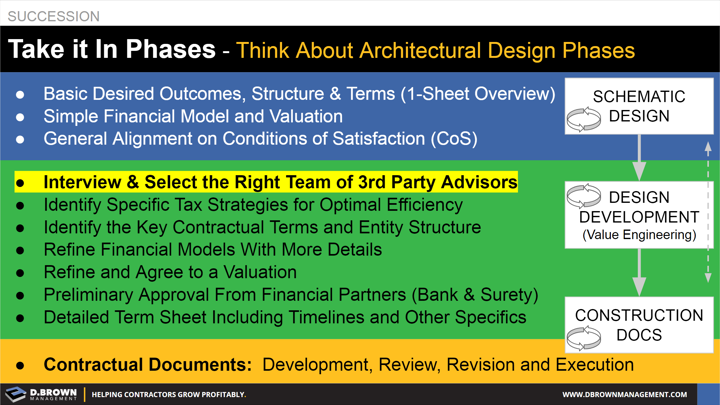Architectural Design Phases: Schematic > Design Development > Construction Documents
- Start with a basic Schematic Design where you define the outline of a deal, including Conditions of Satisfaction and determine if the financial basics will work.
- Gain alignment with the Primary Stakeholder Groups around the Schematic Design, including ensuring the basics of capital, competencies and trust.
- Enter into the Design Development phase the same way you would on a construction project. There are dozens of details to work through at this phase and the most important thing is (1) selecting the right specialist 3rd party advisors to help structure the deal, and (2) setting a regular meeting rhythm to keep the process moving forward. This is where the structural details of the deal will come together, along with refined financial models - consider this like “Value Engineering” and should only improve the model from the Schematic Design phase.
- The final stages is the equivalent of the Construction Documents with the preparation, review, and execution of a variety of legal documents, including buy-sell agreements, operating agreements, promissory notes, etc.
Too often, we see people wanting to jump ahead and “Start Building” without spending the appropriate time on the foundation of a good Schematic Design and prerequisites. An experienced 3rd party facilitator can be invaluable in this phase. Like an architect, they must keep the conversations at the right level during this phase.

